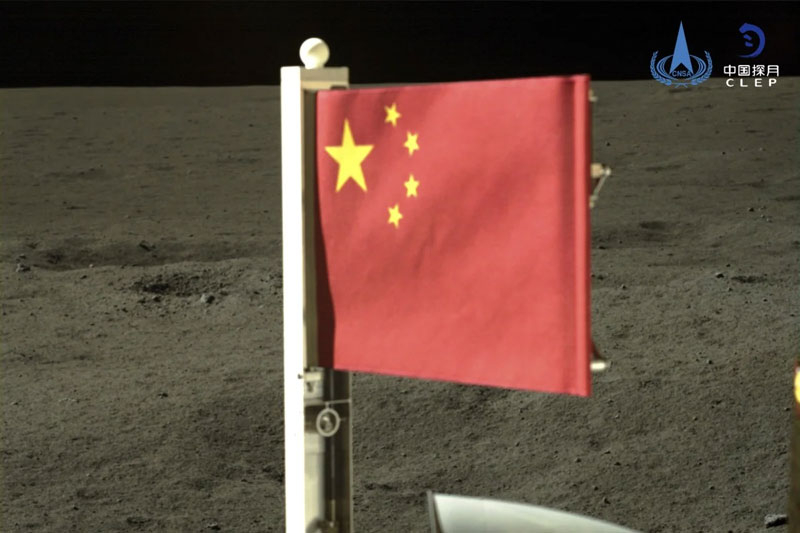The concept of a “dry moon” is becoming a thing of the past. New samples of lunar soil turned out to be “saturated” with water. At least, scientists have found an unknown mineral in the regolith with 41 percent water content by mass. And this is in samples from the visible side of the Moon, but studies of soil from the far side of the satellite will soon begin to be published.

Image source: CNSA
In samples from the Moon brought to Earth more than 50 years ago by Soviet stations and during NASA’s Apollo program, practically no signs of water were detected. This forced scientists to accept the concept of a “dry Moon”, on which, if there was water, it was in extremely limited quantities. This concept has only begun to change in recent years as remote sensing instruments have improved. Thus, signs of oxygen and hydrogen near the lunar surface were detected both by NASA infrared instruments (in 2020) and by the Indian lunar orbital station Chandrayaan-1 (in 2009). It seems that there may still be water on the Moon, and not only in the form of ice in the eternal darkness of the polar craters.
More hopes for discovering water in lunar rock rest on fresh samples delivered to Earth by Chinese stations. In 2020, the Chang’e-5 probe delivered soil samples to Earth from the visible side of the Moon, and earlier this summer, the Chang’e-6 probe brought samples from the far side of the Moon, which happened for the first time in the history of astronautics. Soil samples from the Chang’e-6 mission are not yet available for study, but samples from the previous mission are being studied by scientists with all their might.
In particular, a new joint work of scientists from the Beijing National Laboratory of Condensed Matter Physics, the CAS Institute of Physics and other domestic research institutes has identified an amazing mineral that has not previously been encountered by researchers. It was called “unknown lunar mineral” (ULM-1). The mineral (NH4)MgCl3·6H2O is transparent and is a kind of flat crystal. The analysis revealed up to 41% water molecules by weight in the mineral. The ULM-1 mineral was found among 1,000 other inclusions in a specific sample of lunar soil obtained by scientists for research. To complete the picture, it appears necessary to detect ULM-1 in other samples.
China obtained samples of lunar rock from an area at higher latitudes than Soviet and American stations did. This probably explains the discovery of impressive traces of water in the “Chinese” samples and its absence in the American ones. The presence of water on the Moon will determine the fate of permanent presence bases on the satellite. And it seems that it is more likely to be there than not.